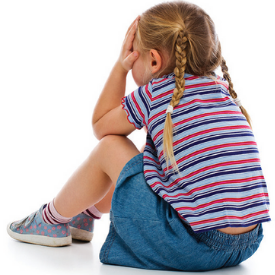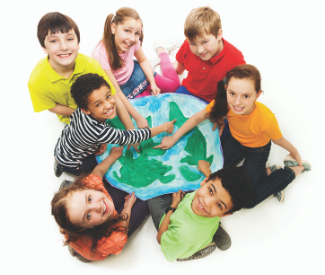NAGC works to support those who enhance the growth and development of gifted and talented children through education, advocacy, community building, and research
Mark Hess
 My colleague whispers, “We must be quieter than mice.” It’s astounding that 40 first and second graders can squeeze into a small space, astounding that no one is poking someone else, trying to tickle somebody, fiddling with pencils or markers, or making
My colleague whispers, “We must be quieter than mice.” It’s astounding that 40 first and second graders can squeeze into a small space, astounding that no one is poking someone else, trying to tickle somebody, fiddling with pencils or markers, or making
animal noises. Lights off in the breakout room between my classroom and my colleague’s 1st grade classroom, it’s astounding that all 40 children are completely silent and gravely still. They all understand what is going on. We are in a lock down, shelter-in-place drill, and we will do this at least three more times before the end of the school year.
Generation Z has never known the world without internet, and they have never known school without these drills—lock down, shelters-in-place where we all huddle silently into small spaces or lock-ins when school doors are locked and no one may enter the building because of possible threats in the neighborhood. When I first started teaching, a lock-in was what students called a fun all-night sleepover at the school; whereas, lock-ins are now threats and precautions in a school’s neighborhood to be shared on social media and even on crawl lines on local news stations. Though I grew up with the vague threat of nuclear war somewhere in the background, today’s kids see their fears come true and broadcast in the media. For gifted kids who tend to be more idealistic and more sensitive than other kids—who are sometimes plagued with existential questions--this almost daily dose of reality has the potential to spawn enormous anxiety.
Grounded in real potential threats, the safety drills are, nonetheless, also part of a larger trend of safety in general for GenZ kids: safe playgrounds with six inch deep beds of wood chips, carpeted gym floors, youth league pitchers wearing chest protectors in baseball, strapping into car seats until past kindergarten, being picked up or dropped off at school or walking to school only with a parent escort. This generation understands what it feels like to be safe—to the extent that even perceived emotional threats are not tolerated. College campuses set aside “emotional safe spaces” where students are protected from words or ideas they find disturbing.
Where does the emphasis on safety, both emotional and physical, leave the gifted learner who feels life more intensely, makes complex connections, perceives on a deeper level, and is touched deeply by the experiences of others? Where does this leave our overthinkers, our kids who imagine and re-imagine their ideal selves and their ideal world? Life’s realities are at this generation’s fingertips like never before. Where does this leave gifted learners who want to save the world but are faced with the daily reality that they may live in a world beyond saving?
As parents and teachers, it makes sense that we want to provide safe spaces for these children who are always but a smartphone’s finger swipe away from the next tragedy, the next act of violence, the next climate catastrophe. Yet here is the conundrum . . . the lock down, shelter-in-place drills are very real reminders that this is not always a safe world. This act of protection and precaution is, ironically, our children’s strongest reminder of real danger. A couple years ago, the parents of an acquaintance of mine decided it would not be fair to tell their gifted and autistic daughter that a beloved great aunt had passed away. They felt it would be too much to handle, that she would agonize over the news, be distraught, be inconsolable. They thought they could keep her emotionally safe that way. What will happen, though, at the next family gathering without the beloved aunt? Will their daughter simply forget the aunt ever existed? Will she never question why her aunt seems to have disappeared? Shouldn’t we expose young adults to discourse on college campuses that might be uncomfortable—just like a lock-down, shelter-in-place drill—because processing the reality of different and sometimes uncomfortable opinions is a healthy step toward understanding, acceptance, critical thinking, and maturity? Shouldn’t we maintain a facilitated discourse about the issues which surround us? Our gifted children are full of emotional and intellectual intensities, it’s true; however, they are also full of a vast capacity for critical thinking, creativity, and problem-solving. After all, this is a generation led by Time magazine’s Person of Year, an autistic and gifted teen girl.
 Huddled together in the shared breakout room between two classrooms, we wait for the announcement containing the code word which tells us all is clear and the drill is over. I wonder about Theo—a brilliant little mathematician whose emotions might swing rapidly from zero to eleven. I wonder about Annie who once wept when her teacher, seeking to provide a unique introduction to a lesson about perspective and perception, had her students wear their shoes on the wrong feet so they would feel uncomfortable and disoriented. “I came to school today thinking everything would be normal, and then this happened,” she told me between sobs. I wonder about Samantha, our 1st grade poet, who happily announced to me one day as students gathered their backpacks and coats to go home, “I love this part of the day because it means I get to go home and be with my family.” I wonder about Shelby whom I witnessed carefully closing a book on her desktop and then staring ahead solemnly for so long that I had to ask her if something was the matter. “That was the most incredible book I have ever read,” was her whispered response.
Huddled together in the shared breakout room between two classrooms, we wait for the announcement containing the code word which tells us all is clear and the drill is over. I wonder about Theo—a brilliant little mathematician whose emotions might swing rapidly from zero to eleven. I wonder about Annie who once wept when her teacher, seeking to provide a unique introduction to a lesson about perspective and perception, had her students wear their shoes on the wrong feet so they would feel uncomfortable and disoriented. “I came to school today thinking everything would be normal, and then this happened,” she told me between sobs. I wonder about Samantha, our 1st grade poet, who happily announced to me one day as students gathered their backpacks and coats to go home, “I love this part of the day because it means I get to go home and be with my family.” I wonder about Shelby whom I witnessed carefully closing a book on her desktop and then staring ahead solemnly for so long that I had to ask her if something was the matter. “That was the most incredible book I have ever read,” was her whispered response.
Their hearts are full. Their world is full of beauty and tragedy alike. I wonder and worry because I understand how deeply they feel. I wonder and worry because, despite our best intentions, we cannot expect to protect them forever. In the end, I believe we as teachers and parents can both protect and guide, nurture and soothe. Generation Z thinks globally, is stunningly accepting of differences, and carries vast potential, but they must be encouraged to emerge from their safe spaces to truly make a difference.
Mark Hess has spent 31 years teaching gifted learners. He is the Gifted Programs Specialist in Colorado Springs District 11, the Pikes Peak Association for Gifted Students president, and state board member for the Colorado Association for Gifted and Talented. As Portable Gifted and Talented, he trains teachers and has published 225 units specifically designed for gifted learners. Mark has three social-emotional lesson collections due to be published by Prufrock Press in the spring of 2021.
The views expressed herein represent the opinion of the author and not necessarily the National Association for Gifted Children.
Daniels, Susan, and Piechowski, Michael. Living with Intensities. Great Potential Press. 2009.
Haidt, Jonathan, and Lukianoff, Greg. The Coddling of the American Mind on the Atlantic website: (https://www.theatlantic.com/magazine/archive/2015/09/the-coddling-of-the-american-mind/399356/ ) accessed 12/14/19.
Twenge, Jean M., Ph.D. iGen: Why Today’s Super-Connected Kids are Growing Up Less Rebellious, More Tolerant, Less Happy—and Completely Unprepared for Adulthood. Atria: 2017.
6 Reasons Why Intelligent People Fail to be Happy. Learning Mind website (https://www.learning-mind.com/fail-to-be-happy-intelligent/ ) accessed 11/26/19.